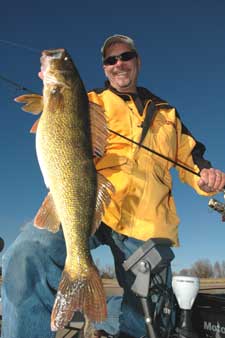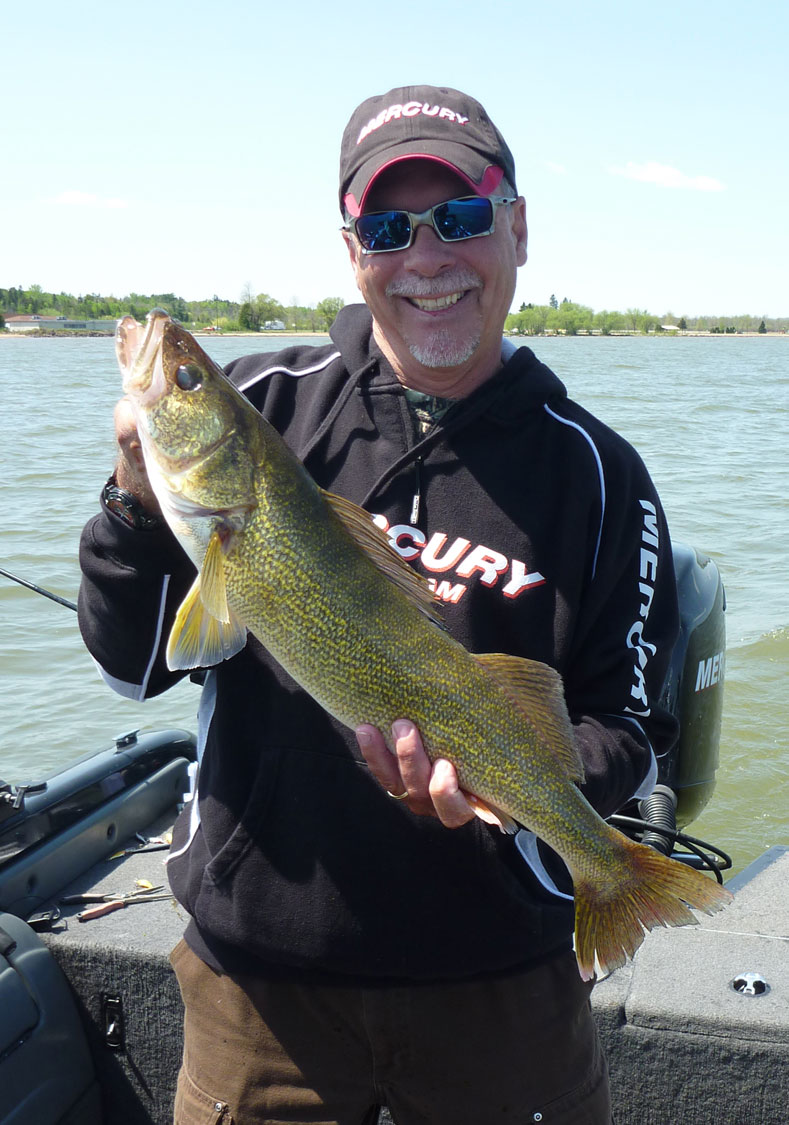 When is a lake not really a lake, and at the same time a river, that’s not really a river? When it’s a reservoir. When does a walleye that lives in a “lake” not always act like a “lake” walleye? When it lives in a reservoir.
When is a lake not really a lake, and at the same time a river, that’s not really a river? When it’s a reservoir. When does a walleye that lives in a “lake” not always act like a “lake” walleye? When it lives in a reservoir.
Those are pretty easy riddles to solve. The tough riddles to figure out come at times of the year like this, when you’re trying to catch reservoir walleyes as they begin to transition from summer patterns to fall patterns. Transition periods can be tough to pattern on any body of water, but in reservoirs, the fish have so many options it makes solving the riddle a real challenge. Amazingly, the answer isn’t as tough as you might imagine. In fact, the biggest mistake most reservoir anglers make is thinking of the reservoir as a lake, when in reality, it’s more of an “over-grown” river.
Walleyes in natural lakes can be found in a bunch of different places … weeds, rock reefs, points, or even suspended over main-lake basins to name a few. Reservoir walleyes are somewhat simpler … main-lake points and flats will generally hold the majority of the fish most of the year. Part of the riddle comes in determining which points, and what type of flats fish are relating to. A good reservoir main-lake point will be one that extends into deep water, and provides good ambush points in the form of breaks and feeding shelves at various depths. A good flat will also have access to deep water, and is often in close proximity to a good point. In the case of western reservoirs such as Oahe in South Dakota, or Fort Peck in Montana, there are literally hundreds of potentially good points and flats to choose from. Therefore, you need to narrow down your search to those structures that would be in the path of the walleyes’ migration this time of year.
Remember, reservoir walleyes are “river minded”, and as fall approaches, will make a migration up river. How far this migration goes is determined by the amount of current coming into the reservoir. If there’s been lots of rain upstream, or the Corp of Engineers are releasing water creating good current flow, the walleyes will move further up. Concentrate your fishing in the upper portion of the reservoir this time of year and you’ll up your odds of finding the mother lode.
Another part of the riddle many fishermen have a tough time solving is what depth the walleyes will be holding. Here’s where today’s modern fishing technology shines. A good quality depth finder like Lowrance’s LCX-112C provides the resolution and power needed to spot fish, baitfish, and subtle bottom transitions that make one piece of structure better than another. Cruise potential points and flats looking for signs of life. Once you’ve determined the spot you’re on is holding fish, make note of the depth at which they’re “marking”. If you’re marking fish in, say 15 feet, try running a Bouncers from the bow1 1/2 ounce Rock Runner Bottom Bouncer and spinner tipped with a crawler through them. Follow the entire contour of the point at that depth, being sure to hit the “cups” on the inside of the point where it breaks from shore. Working from the bow with the trolling motor and your eyes on the depth finder, will give you the maneuverability to cover the structure effectively. This method works well on “flats” fish also, and a trolling motor like MotorGuide’s PTSv, equipped with digital steering and automatic tracking, is very helpful in keeping you on-line and in the fish zone, even when you’re busy rebaiting hooks, landing fish, or grabbing a sandwich.
 If your searching has found the walleyes hanging in the deeper haunts off the end of the point or the edge of a flat, slowly working a bottom bouncer rigged with a straight snell tipped with a lively minnow can be a deadly presentation. Keep the rig as vertical as possible in this situation for the optimum control. Deeper fish tend to be less active, and dangling a bait in their face will get more bites than running one past them. Make no mistake, this is a finesse technique, demanding precise boat control and a sensitive touch.
If your searching has found the walleyes hanging in the deeper haunts off the end of the point or the edge of a flat, slowly working a bottom bouncer rigged with a straight snell tipped with a lively minnow can be a deadly presentation. Keep the rig as vertical as possible in this situation for the optimum control. Deeper fish tend to be less active, and dangling a bait in their face will get more bites than running one past them. Make no mistake, this is a finesse technique, demanding precise boat control and a sensitive touch.
A good bottom bouncer rod like the Walleye Angler Signature Series model WA66BBT, a quality reel spooled with 10/4 FireLine tied to a bouncer rigged with a 6 foot leader of 8 pound test Berkley Trilene 100% Fluorocarbon and a super sharp Mustad Ulta Point “Big-Red” Bait Hook is the perfect arsenal for handling this situation. The rod and the FireLine give you excellent feel of what’s going on below, Fluorocarbon makes the leader virtually invisible to the fish, and there’s no sharper or more durable hook for keeping fish on from hookset to net.
There will be times when fish are so shallow that casting for them is a better option. If you’ve marked fish in the 10 to 15 foot range, but can’t get them to go on spinners, then consider that the “biters” may actually be even shallower. These will be very active fish, and pitching 1/16th or 1/8th ounce Bass Pro Shops XPS Walleye Jigs tipped with Berkley Power Minnows or GULP! Minnows will be all you’ll need to trigger bites.
You may find walleyes are hanging off the edge of the main-lake flats, in what’s called the “fringe”. That is to say, relating to the structure, but not directly on the structure. Here’s where trolling cranks is your best option. Moderate action lures are top-notch choices in this scenario. This tactic closely resembles “open water” trolling, but you’re fishing in close quarters to structure.
As the reservoir walleye’s fall transition progresses, the fish may actually begin moving into the river itself. In this case, it becomes true river tactics time. Vertical jigging the channel edges, or the edges of main river holes will produce. Don’t overlook backwater areas, provided they too have sufficient current flowing through them.
Reservoir walleyes can be a riddle during transition periods. Just keep in mind that these are not true “lake walleyes”, but more closely mimic river dwellers. Solve all the pieces of the riddle and you’ll have a good day on the water.










